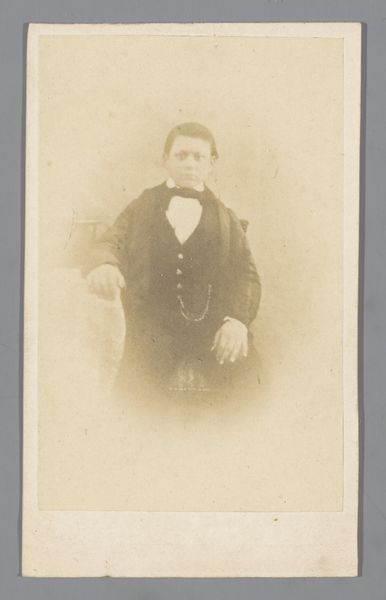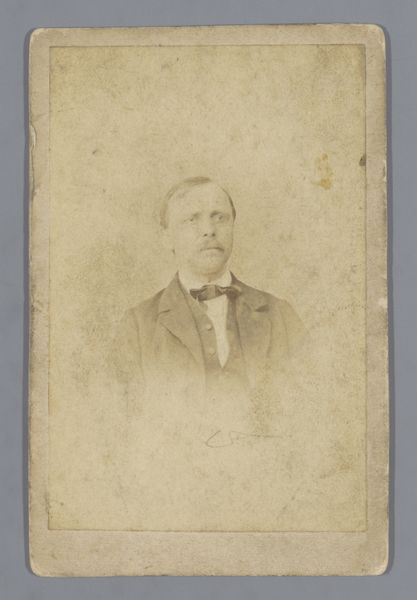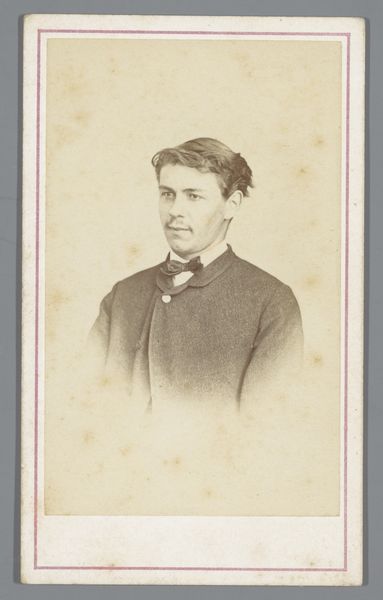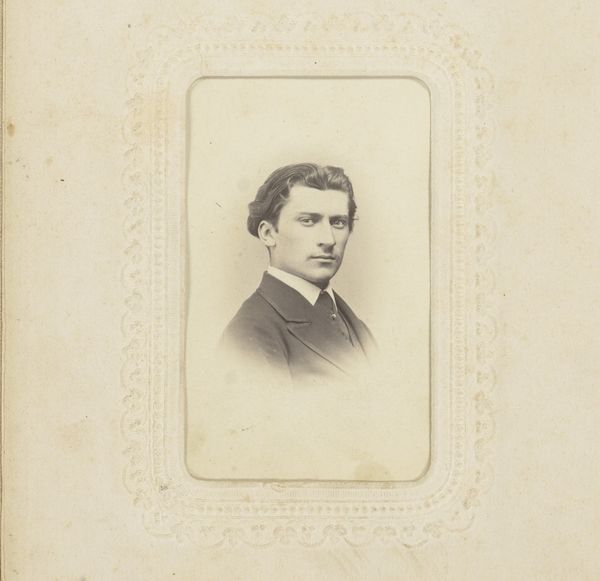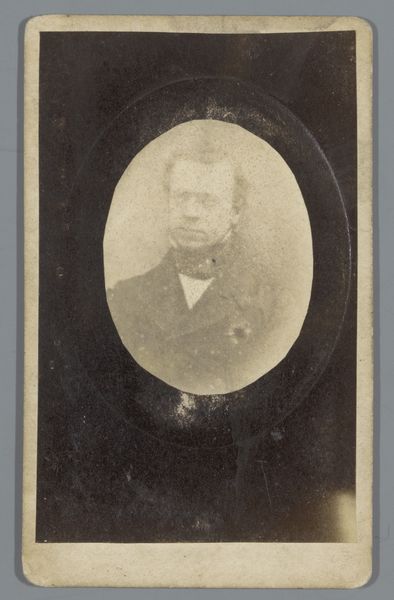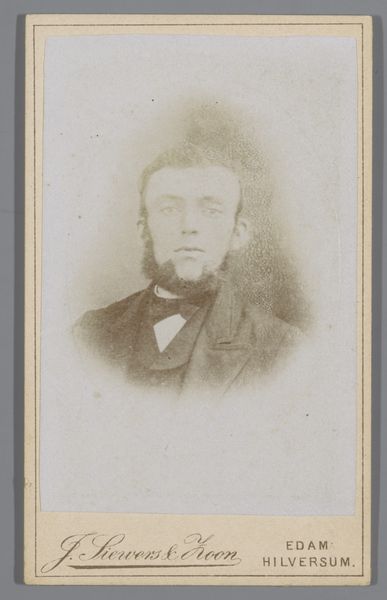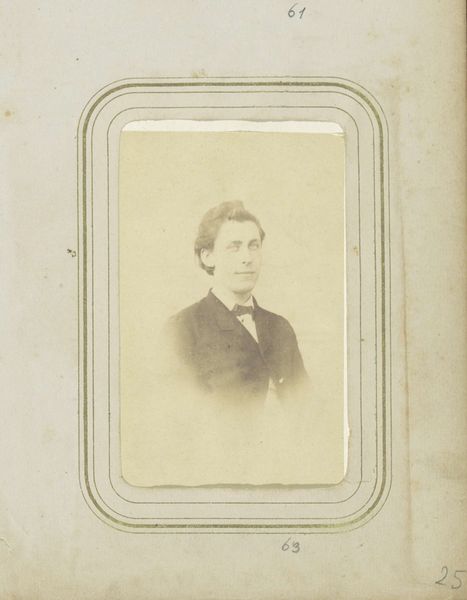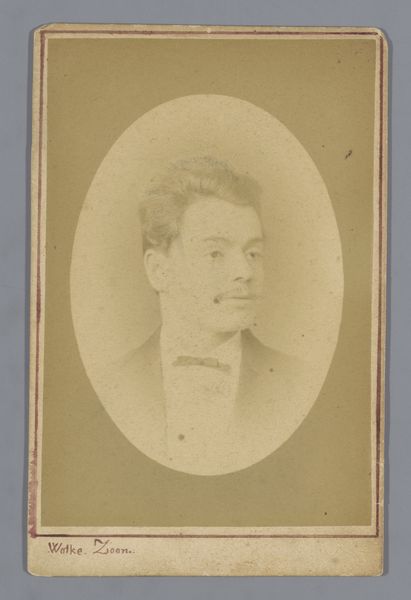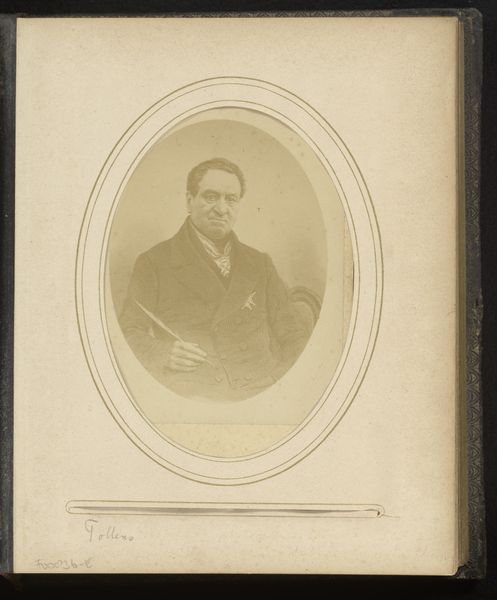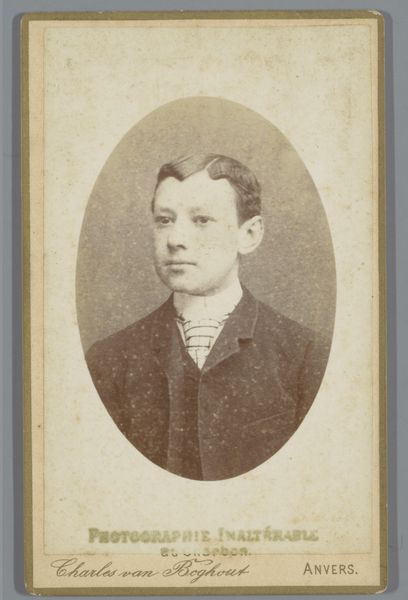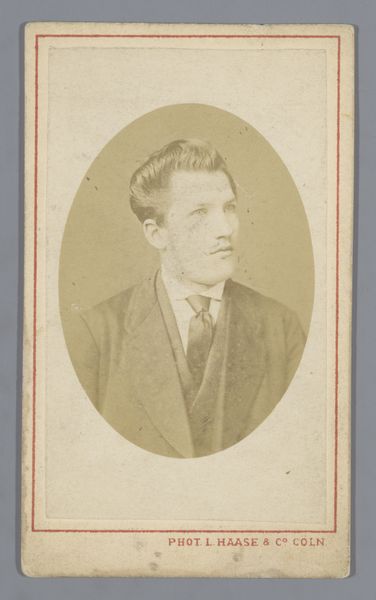
photography, albumen-print
#
portrait
#
photography
#
albumen-print
#
realism
Dimensions: height 104 mm, width 62 mm
Copyright: Rijks Museum: Open Domain
Curator: Let's take a look at "Portret van een man," a albumen-print photograph dating roughly between 1850 and 1900. Editor: My first thought is, this feels surprisingly intimate. Even through the slightly faded sepia tones, there’s a sense of quiet contemplation. It is a remarkably sober photograph for the era, considering it was rare to be photographed at the time. Curator: The albumen print process is key here. It involves coating paper with egg whites and silver nitrate, then exposing it to light through a negative. This created a glossy surface with great detail, popular in that era for its ability to produce relatively stable and sharp images. One has to wonder who the photographer was and the story behind it. This photograph would've represented not only skill but cost, potentially offering a unique window into 19th-century consumer practices. Editor: Yes, the oval frame draws you in, creating this enclosed, almost symbolic space around him. There is almost an iconographic resonance: his gaze and slightly somber look evoke this sense of quiet respect and reserve typical of those formal portraits. The slightly blurred quality contributes to this, softening the sharp edges of time. Curator: I think it is really interesting you say the composition creates intimacy; I find the format speaks more about class. His clothes aren't overly ostentatious. I read his gesture as being of formality and the implicit wealth behind commissioning such portrait. I wonder about the studio settings, backdrops available, how were these circulated. Editor: Perhaps it’s both, really! I see your points of consumption practices through the labor implied by his clothes, but the fact that such an image was intended for circulation is a kind of status assertion as well, reinforcing this connection with social memory. And the pose becomes interesting; It's interesting how such an austere image still manages to convey some element of personal presence. It is intriguing. Curator: Ultimately, the albumen print provides a fascinating intersection of materiality, labor, and early photographic practices that can provide key data to better contextualize consumption in 19th century society. Editor: I think that, regardless, those glimpses connect us to shared, if mediated, experience. It prompts introspection about how images continue to hold cultural weight.
Comments
No comments
Be the first to comment and join the conversation on the ultimate creative platform.
